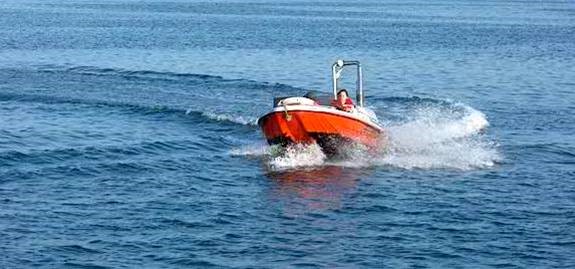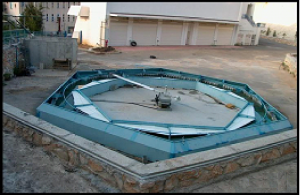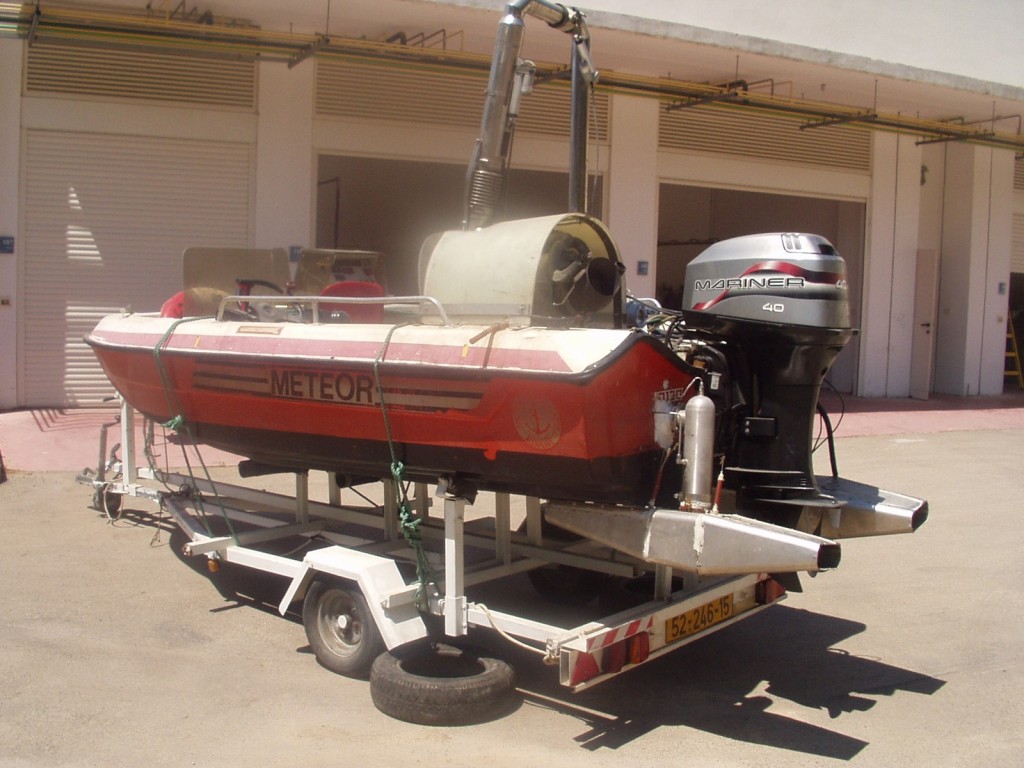Students (1990-2014):
Dr. Aviad Gofer, Arik Shemer, Dr. Herman Haustein, Dr. David Albagli,
Dr. Marat Mor, Hezi Varshay, Oren Koren, Shlomit Valensi
Supervisor: Prof. Alon Gany
Two-Phase Marine Ramjet


A new marine jet propulsion technology characterised by simplicity as well as very high cruise speed capability (theoretically, as much as 100 knots), far beyond the speed range of conventional propeller propulsion, has been investigated. The operating principle of the marine jet technology is similar to that of the aeronautical ramjet engine. Water is ingested into the propulsion unit and is accelerated by the addition of compressed air to form a high-speed two-phase exhaust jet, resulting in a high thrust.
The main advantages of the marine ramjet are: Very simple, compact device. No moving parts in contact with water (no propellers, no pumps). No cavitation problems. The power plant is a source of compressed air or gas rather than mechanical shaft power. Pneumatic power transmission, avoiding complicated gear boxes and drive shafts. Modular and can be fitted into existing hulls as well as integrated into novel designs. Operational speeds can be increased remarkably compared to conventional marine propulsion range.
Laboratory tests have been conducted in a 10-m-diameter water-tank with a towing and thrust measurement capability, using 30 cm propulsion unit models at speeds as high as 35 knots.
Experimental and theoretical investigation on the use of a liquefied gas as a source bubbles for two-phase jet propulsion has been conducted as well, presenting data on the boiling dynamics of a volatile liquid within a host liquid, and revealing performance similar to that of air injection.
A specially instrumented test platform (boat) with an on board turbo-compressor providing up to 0.5 kg/s of air was used for full-size sea trials. The data gathered show good agreement with theoretical predictions.


Two-Phase “After-Burner” Boost Concept
Theoretical and experimental investigation has predicted the option of providing substantial increase in thrust and boost capability, through the injection of gas (air) bubbles into the exhaust nozzle flow of a water-jet propulsion unit. Static tests with a jet-ski revealed thrust increase by 20-50% by the introduction of 50-160 g/s air bubbles to the water jet, with about 70% efficiency compared to the ideal thermodynamic cycle.


Two-Phase Flow Research
Models and computer codes for two-phase bubbly flows, enabling the solution of high speed flows through nozzles, choking and compressibility phenomena, and thrust prediction with relation to two-phase ramjet propulsion, have been developed and studied. The theoretical studies include heat, mass and momentum transfer between phases, expansion work, compressibility and shock waves. Study of rapid boiling of liquid and bubble development within a host water medium has been studied experimentally and theoretically. It reveals a possible application to submerged, underwater two-phase ramjet propulsion.
Patents
Varshay, H. and Gany, A., “Underwater Two-Phase Ramjet Engine”, United States Patent Number 5,598,700, Feb. 4, 1997, and Registered Patent in 15 more countries (11 European countries, Canada, Australia, South Africa, Taiwan).
Varshay, H. and Gany, A., “Underwater Two-Phase Ramjet Engine”, United States Patent Number 5,692,371, Dec. 2, 1997.
References
Gany, A., Analysis of a New Thermodynamic Power Cycle for a Two-Phase Waterjet, International Conference Waterjet Propulsion 4, The Royal Institute of Naval Architects (RINA), London, UK, May 26-27, 2004.
Albagli, D. and Gany, A., High Speed Bubbly Nozzle Flow with Heat, Mass and Momentum Interactions,International Journal of Heat and Mass Transfer, Vol. 46, No. 11, 2003, pp. 1993-2003.
Mor, M. and Gany, A., Analysis of Two-Phase Homogeneous Bubbly Flows Including Friction and Mass Addition,Journal of Fluid Engineering, Transaction of ASME, Vol. 126, No. 1, Jan. 2004, pp. 102-109.
Mor, M. and Gany, A., Performance Mapping of Bubbly Water Ramjet, International Journal of Maritime Engineering, Vol. 149, Part A1, 2007, pp. 45-50.
Gany, A., “Two-Phase Marine Ramjet Propulsion Research”, The Australian Naval Architect, Vol. 12, No. 2, May 2008, pp. 36-40.
Haustein, D. H., Gany, A., and Elias, E., “Rapid Boiling of Two-Phase Droplet in an Immiscible Liquid at High Superheat”, Journal of Heat Transfer (ASME), Vol. 131, Dec. 2009, pp. 121010-1 to 121010-7.
Gany, A. and Gofer, A., “Study of a Novel Air Augmented Waterjet Boost Concept”, Journal of Ship Production and Design (JSPD), Vol. 30, No. 1, Feb. 2014, pp. 1-6.

